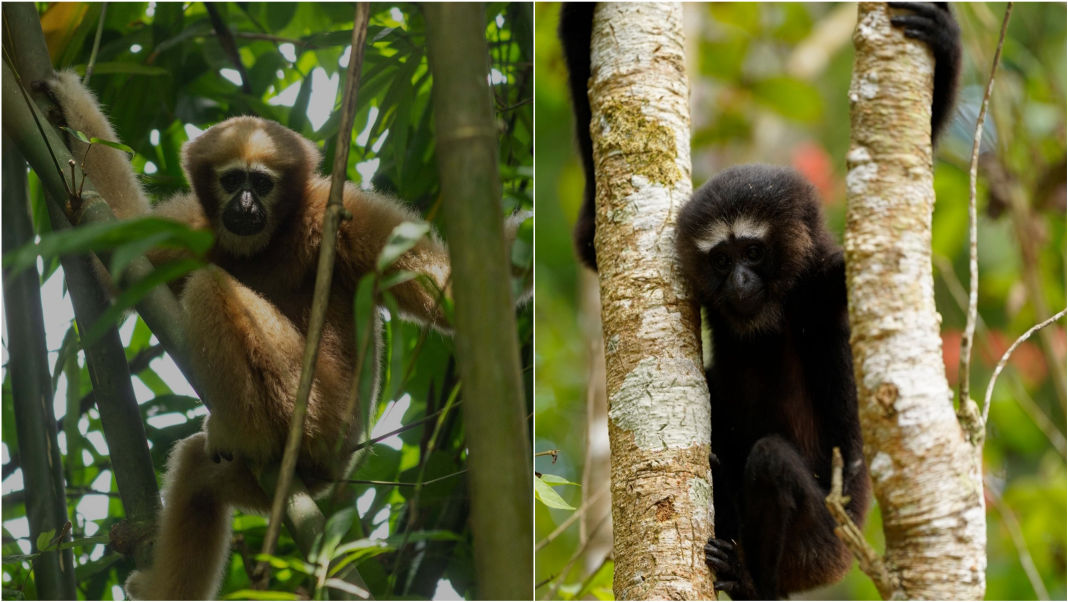Shillong, April 25: Known for their haunting morning songs and acrobatic life in the treetops, Western Hoolock Gibbons are not just India’s only non-human apes—they’re also late bloomers, a new study has found.
Research conducted at the Sonja Wildlife Rescue Centre in Silsotchigre, West Garo Hills, Meghalaya, reveals that Western Hoolock Gibbons don’t reach adulthood until they are between 9 and 11 years old—significantly later than the previously believed age of 6 to 8 years.
The study, carried out under the Huro Programme by Siddharth Badri, Susan M. Cheyne, and Florian Magne, was published in Folia Primatologica, the official journal of the European Federation of Primatology.

Over 15 years, researchers observed 12 gibbons—many rescued from the illegal pet trade—tracking their development from infancy through adolescence. They found that puberty typically begins at around 8 or 9 years of age, followed by a full year of physical and hormonal changes before the gibbons reach full maturity.
This discovery is critical for conservation and rehabilitation. Many gibbons are released into the wild prematurely, before they are biologically ready to pair or survive independently. Understanding their actual developmental timeline could greatly improve the success of rehabilitation and rewilding efforts.
The study also documented the gibbons’ striking physical transformations—buff-coloured females with white face rings and dark-fringed limbs, and jet-black males with prominent brows and distinctive chest tufts—marking their entry into adulthood.

Among the study’s subjects were individuals like Remi, a female who reached adulthood at 10 and was released at 14, and Kalsin, a male who matured at 11. These carefully timed reintroductions show the importance of waiting until the apes are truly ready.
“This study sheds light on both the uniqueness of Western Hoolock Gibbon biology and their similarities to humans,” said Siddharth Badri, the study’s lead author and a PhD student at Oxford Brookes University. “As the only non-human apes in India, it’s crucial to understand their developmental timeline to inform rehabilitation and rewilding efforts in the country.”
Siddharth also expressed his gratitude to the Huro Programme and his co-authors—Susan M. Cheyne, Vice Chair of the IUCN SSC Primate Specialist Group, and Florian Magne, Director of the Huro Programme.
“All gibbon rehabilitation and reintroduction must be guided by the best available science,” said Dr. Cheyne. “Centres like Huro are essential to improving our understanding of gibbons, and this paper is an important contribution to the science of Western Hoolock Gibbons.
Also Read: CoMSO urges GHADC to act on Influx, trading licence misuse and unregulated hawkers
Also Watch
Find latest news from every corner of Northeast India at hubnetwork.in, your online source for breaking news, video coverage.
Also, Follow us on-
Twitter-twitter.com/nemediahub
Youtube channel- www.youtube.com/@NortheastMediaHub2020
Instagram- www.instagram.com/ne_media_hub
Download our app from playstore – Northeast Media Hub





